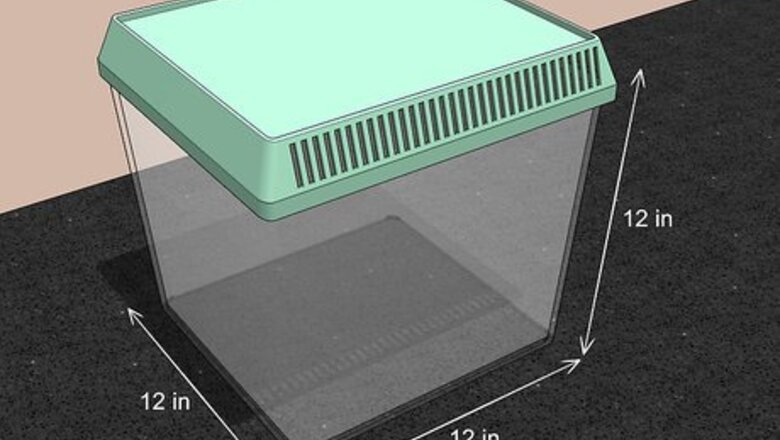
views
Putting Together Your Katydid’s Habitat
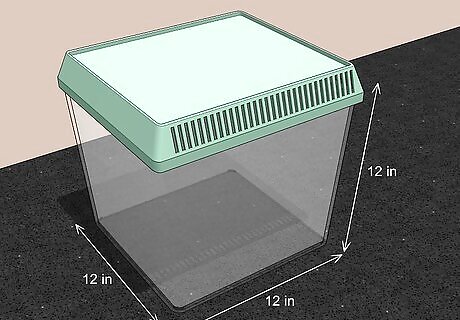
Get a ventilated tank that is at least 30 by 30 by 30 cm (12 by 12 by 12 in) big. This will be a big enough tank to house 1-2 katydids, although there’s no harm in using a bigger tank than this! Make sure at least 1 of the sides of the tank is made of mesh or gauze, to ensure that the tank is adequately ventilated. Keeping the tank well ventilated is very important for keeping your katydid from suffocating! Go to any pet store that sells supplies for keeping insects to find a suitable tank for your katydid. You can also keep your katydid in an enclosure made entirely of mesh or gauze, if you prefer that over glass. Use mesh or netting for the roof of the tank; your katydid will hang from this material when it’s molting.
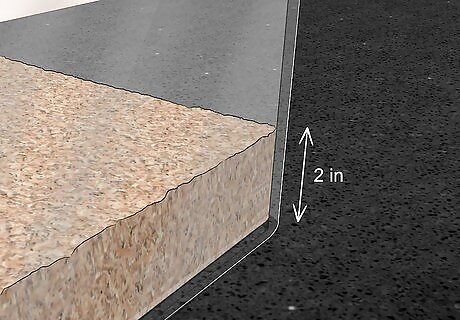
Cover the floor of the tank with 5 to 8 centimetres (2.0 to 3.1 in) of substrate. Because you’ll have to keep the inside of the tank pretty moist, use a moisture-absorbing substrate for best results. Examples of this type of substrate include potting earth, small pebbles, or even tissue paper. You can buy this type of substrate at any pet supplies store or even some home improvement stores.
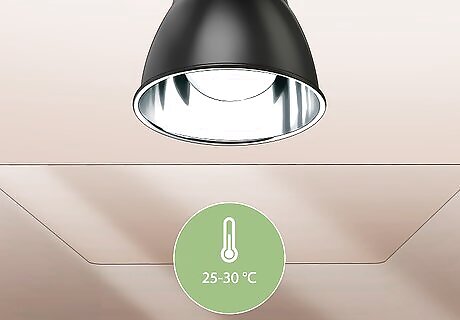
Keep the temperature of the tank between 25 and 30 °C (77 and 86 °F). The best way to do this is to use a light bulb, since your katydid will also need a source of light other than direct sunlight. Place the light in the top of the tank and use a bulb wattage between 15 and 25 watts for best results. You can monitor the internal temperature of the tank by placing a thermometer along the side of it. Avoid using an energy-saving bulb or fluorescent light tube, since these won’t provide the right amount of heat for your katydid.
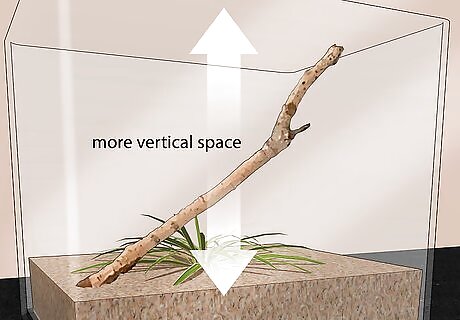
Minimize the amount of decor you put in the tank to maximize space. Your katydid doesn’t need much in the way of decor, since the leaves you feed it will essentially act as decoration. However, your insect will need lots of vertical space in order to be able to molt, so use a “less is more” approach when it comes to decorating your tank. If you absolutely want to decorate your tank, consider opting for just a small branch and a couple of leaves to simulate the katydid’s natural habitat.
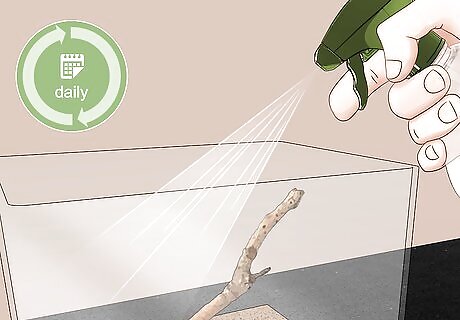
Spray the inside of the tank with water every day to keep it moist. Katydids need a warm, moist climate to live in. Spray enough water into the tank so that the substrate is kept moist every day. If you notice that it’s difficult to keep the substrate moist, you may have TOO much ventilation in the tank. If this is the case, you’ll have to reduce the amount of mesh siding you have to keep some of that moisture in the tank.
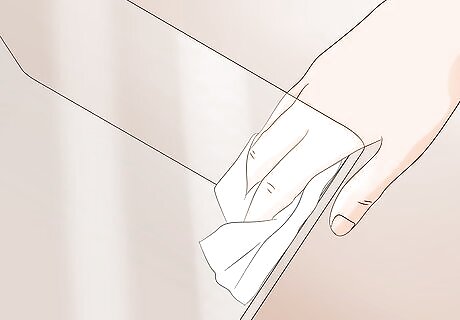
Clean out the tank once a week to prevent mold and fungi buildup. Place your katydid in a separate holding tank, similar in structure to your normal tank, while you’re cleaning. Remove all of the dirty substrate from the tank, as well as any droppings and old leaves on the ground, then add new, clean substrate to the floor. This is especially important not only because your katydid will produce a lot of droppings, but also because the moist environment of the tank is very amenable to mold buildup.
Feeding and Handling a Katydid
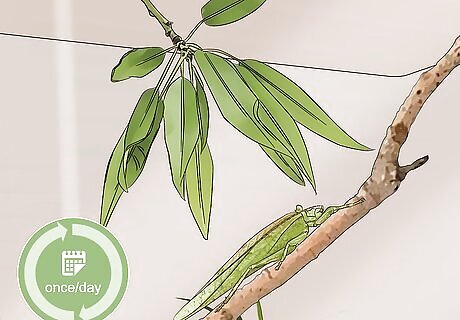
Feed your katydid tree leaves and stems once a day. All katydid species will eat leaves and stems, while some will also eat fruit, flowers, and small insects. If you’re not sure what species your katydid is, just feed it a simple diet of 1 or 2 leaves of oak, bramble, hazel, hypericum, or butterfly bush every day. If you want to see if your katydid will eat an insect, try leaving a few aphids in its tank. If it eats insects, it’ll definitely eat these! If there’s any food leftover from the previous day, remove it before you feed your katydid again.
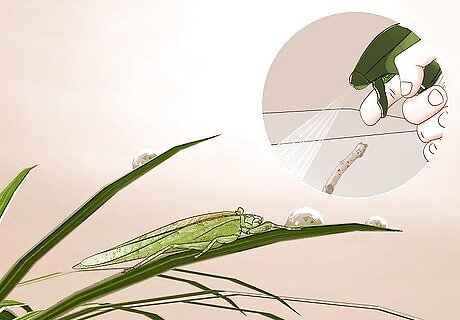
Stick to spraying the inside of the tank in order to water your katydid. Katydids get their daily water intake by drinking tiny droplets of water off of leaves, rather than drinking it from a bowl or cup. Luckily, when you spray the inside of the tank to keep it moist and humid, you’re also providing your katydid with the water it needs to survive! Thus, you don’t have to have an extra water bowl for the tank. In fact, if you have infant katydids in your tank, it’s much safer to not have a water bowl in the tank at the same time, since the katydids could fall into it and drown.
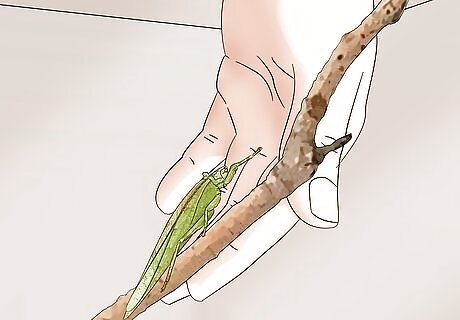
Be very careful when handling your katydid. Your katydid may or may not react well to being handled, but if you want to try it out, just be aware that they are very fragile creatures. They can also jump pretty far, so keep a close eye on your pet when you take it outside of the tank. Some katydids will also bite, but don’t worry, their bites won’t hurt that much!
Breeding Katydids
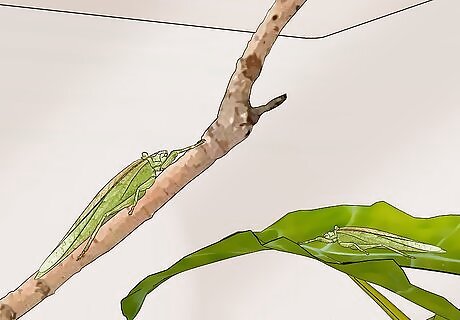
Keep at least 2 adult katydids in an ideal tank environment. As long as you have 1 male and 1 female katydid in your tank and you make sure the humidity, temperature, and food in the tank are all correct, your katydids will eventually breed by themselves. Keep them in a relatively large tank as well, especially if you’re planning to create more katydids. Instead of a 30 by 30 by 30 cm (12 by 12 by 12 in), consider going with a 45 by 45 by 45 cm (18 by 18 by 18 in) or even 60 by 60 by 60 cm (24 by 24 by 24 in) tank.
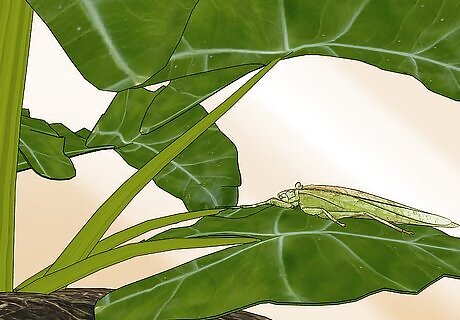
Make sure there’s a plant with a thick stem in the tank. Female katydids, especially field katydids, like to chew big holes in plant stems and deposit their eggs inside. The type of plant doesn’t overly matter, so long as it has a relatively thick stem. Try and use a stem that’s thicker than the body of your katydid, if possible. Some species of katydid will bury their eggs in the substrate rather than deposit them in a plant stem. If you’re not sure what species you have, go ahead and put a plant stem in the tank just in case.
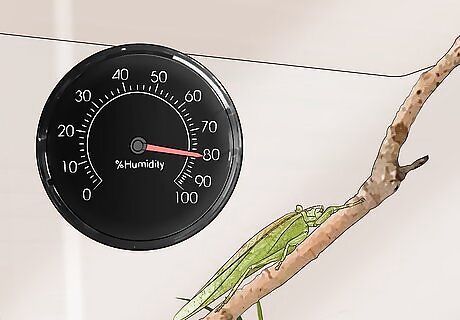
Maintain 80% humidity levels in the tank for 60 days. Katydid eggs take 45 to 60 days to hatch, but they require a very humid environment in order to remain healthy. Make sure you’re spraying the inside of the tank at least once a day and consider spraying it twice on occasion in order to ensure the eggs have enough moisture to last 2 months. Use a terrarium hygrometer attached to the side of the tank to measure its internal humidity levels. You can buy this type of hygrometer online or at any pet store that sells supplies related to keeping insects. You should also continue to maintain a very humid environment in the tank after the eggs hatch, since young katydids also require a lot of moisture in order to be able to molt properly.











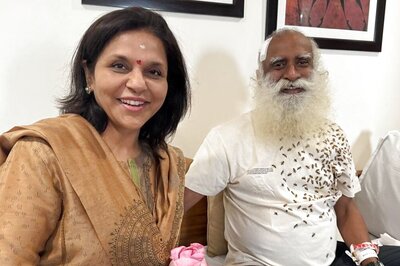

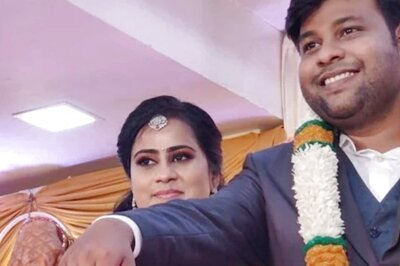






Comments
0 comment